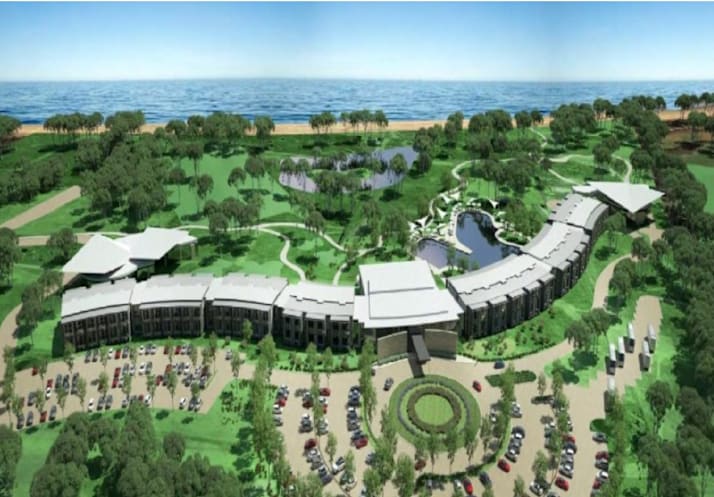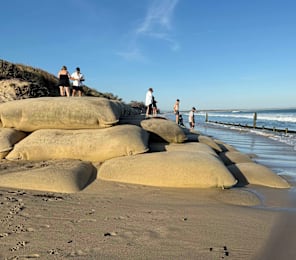YOU’VE got to go way back to a hare-brained proposal in February 2017, to develop a multi-million-dollar resort-style hotel at 92 Norsemans Road Coronet Bay, primarily for Chinese tourist groups, to find the genesis of the “Bass Coast Unlocking Rural Tourism (BURT) Strategy”.
The resort proposal, which involved a 173-unit hotel, 354-space carpark, hospitality and function facilities, with a residential component to follow, and expected to generate a $20 million benefit annually for the Bass Coast economy, attracted a lot of criticism locally.
The council of the day, of which only Cr Brett Tessari remains, reportedly backed the local opposition and rejected the proposal which ultimately didn’t progress to VCAT, although the now-deregistered company behind the proposal, Ausco Investment Group, is listed as taking four other municipalities to VCAT around the same time; Whitehorse, Monash, Kingston and Greater Dandenong.
As well intentioned as the development of the BURT strategy was then, as a way of giving council the necessary tools to protect itself and the community from unwanted developments of that sort, especially in rural zones, the adopted strategy was at risk of doing the exact opposite.
As a result of a motion at last Wednesday’s council meeting, the BURT has now been dropped, and with it goes the $100,000 grant the shire received in 2020 from the Victorian Planning Authority to undertake the research work for the strategy.
But it would be unfair to say the present council is responsible for the $100K loss.
Much has changed since 2017, most notably the arrival of a new Bass Coast Statement of Planning Policy (SPP), coming out of the Distinctive Areas and Landscapes (DAL) process, the introduction of the state government’s fast-track Development Facilitation Program (DFP) in October 2020, and most-recently, the Planning Amendment (Better Decisions Made Faster) Bill 2025 introduced into State Parliament in the past week.
While the new SPP, establishing permanent settlement boundaries around Bass Coast’s townships, offers a higher level of protection for the towns, Bass Coast is back to the drawing board when it comes to controlling inappropriate development in rural areas and across Victoria, councils and their communities are finding themselves increasingly cut out of the approvals process for such projects as the former Norsemans Road development in the future.
At the Bass Coast Shire Council meeting last Wednesday, council unanimously voted to discontinue the strategy after receiving a report from council officers, at the initiative of Island Ward Councillor Tim O’Brien.
At the September 2025 council meeting, Cr O’Brien called for a report on the BURT no later than the November 19 meeting of council saying the “ill-conceived” strategy put at risk the preservation of the region’s sweeping ocean vistas and shorelines, framed by its scenic landscapes and undulating farmlands, which defined a unique rural character of national and international significance.
“The narrative to the BURT,” he said, “indicates its intent to facilitate mid- to large-scale tourism development in areas now restricted by FZ and FAZ zoning. Essentially being to unlock restrictions within the planning scheme to large-scale development in farm zone areas. In so doing, it brings a host of potential unintended consequences.”
Chief among them were to undermine the protections offered by the DAL, facilitating rezoning under BURT provisions and posing “risk to some of our most treasured places, hinterland and shorelines”.
“The BURT pleases almost no-one,” he said in September.
And Cr O’Brien doubled down at last Wednesday’s council meeting:
“Look, I'm very pleased to second Cr Thomson's motion. And I did note the report requested, but while we perhaps didn't get the wording entirely clear in that motion asking for a report, the intent was clear that being to identify the tensions between the intent of the BURT and the intent of the DAL, namely, to preserve character, protect environment and curtail development in sensitive areas.
“Other than argue against itself more than once, this report does not clarify with any granularity the key points of concern. It says that the BURT and SPP should be seen largely as complementary policy documents. That, of course, is moot.
“I am perplexed as to why the BURT exists at all and why the strategy was progressed, despite knowledge of the DAL in prospect. The BURT carries radical changes to land use planning, changes which can which become permanent once those new uses are approved, there is no going back. It cannot be unscrambled.
“So, Cr Thompson's motion places us today at a point in this region's history. This is another of those decisions we will make that will have a very, very long tail.
“The opposition to the BURT from our community is clear. It is not supported by farmers and their representative bodies, the REG group and VFF representatives there, who will be hurt by its outcome, who will see piece by piece, land around them bought up by land bankers and speculators waiting to capitalise on rezoning opportunities.
“It is clearly not supported by the community, for that majority who survey after survey nominate the preservation of character as a key objective of Council. It is not supported by conservation groups, by PICS, by the National Trust, by Coastcare groups and others who don't want high-end tourism developments hanging over our treasured coastlines outside settlement boundaries, their approvals facilitated by the prose of radical change to rezoning within farm zones.
“The BURT is overreach. If we have problems with current planning, we should be looking to address those shortcomings with community consultation in view of the rural land use strategy 2014 and as if we need reminding here, in this beautiful and largely unspoken region, so close to Melbourne, the environment is the economy. It is in our stewardship, and we today and those who follow us are its protectors.
“I recognize that nothing stays still. I'm not against sensible, considered development, but the BURT misses the point in so many ways, mostly because it looks at this region, at the island, through a very narrow tourism lens, at the expense of so many things we hold dear in this wonderful, largely unspoiled region. We have too much at stake, too much too easily lost to not put this unwelcome strategy to bed. It is good night BURT.”
Cr Jan Thomson spoke on a similar vein when introducing the motion to discontinue the strategy.
“The Distinctive Areas and Landscapes plan was to remove real and perceived barriers in planning regulations, to encourage large scale tourism investments such as luxury resorts, five-star hotels and destination restaurants, even on farmland and near sensitive environments. The BURT prioritised opening rural land, much of it previously protected for agricultural or its environmental and scenic value, to new high-end tourism developments. The BURT, in fact, will lead to the loss of farmland and its natural habitats. The BURT puts Phillip Island’s unique rural character and the rest of Bass Coast at risk. Our farmland should stay as farmland. Our woodlands and wildlife corridors should stay protected. Our rural communities do not want to become suburban precincts. The BURT has had little to no support within the community, and I therefore move the motion to discontinue the Bass Coast Unlocking Rural Tourism strategy,” said Cr Thompson.










